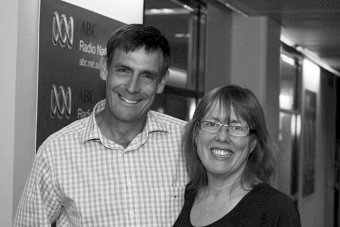Rick Farley's biographers, Nicholas Brown and Susan Boden, reflect on his legacy.
In the 1980s and ’90s, agricultural politics in Australia had one master pragmatist: Rick Farley (1952–2006). In his many public roles, from head of the National Farmers’ Federation to campaigner for Aboriginal land rights, Farley negotiated the problems at the heart of Australians’ relationship with the land – the restructure and globalisation of agriculture, landscape erosion, and contested land ownership between Aboriginal peoples and farmers.
When asked to review A Way Through, our biography of Rick Farley, Tim Flannery and Laura Tingle focused on different but complementary aspects. Tim Flannery wrote of Farley’s work for a ‘sustainable and united Australia’, while Laura Tingle contrasted his practical, respectful approach to ‘our current ugly politics’. Both point to the gaps that Rick Farley’s death has left in the physical and political landscape of Australia.
While a biography looks back to the times of its subject, Farley’s very recent death in 2006 and the ongoing impact of ‘his’ issues gives his biography a contemporary flavour. ‘What would Rick Farley do?’ is a question that sits in the back of our minds, and in the minds of many of the 300 people we interviewed for the book. What would he do about a carbon tax, immigration, coal seam gas, the Northern Territory intervention and water allocation in the Murray-Darling Basin? What would he suggest to achieve progress in a hung federal parliament? What might he think about the role of protest and the Aboriginal Tent Embassy?
Farley would have had views on all these issues, but his overwhelming contribution would be in the form of a process – a ‘way through’ – as the title of his biography suggests. Though this process was a reflection of his character, it was not built on personality alone. Farley had a well thought-out approach to reaching agreement in complex situations.
For Farley, the issue needed to be real. The parties that came to the negotiating table needed the authority to make decisions and a willingness to put their ideas forward. People needed to be given a chance to speak and know that their viewpoints were understood by everyone in the room. Negotiations needed to be in the present, informed by history, but without drifting back into a past that couldn’t be changed. Agreements needed practical anchors: people needed to understand their roles and finances, and make sure solid administration was in place. As Farley argued, ‘it is not the best deal possible, but the best possible deal’.
In an age of spin, where a trivial stumble becomes viral in seconds and so many outlets exist for ‘opinion’, Farley’s way still seems radically fresh. We live in fragile environmental and economic times. Cynicism, suspicion and anxiety have become the language of political discussion. For Tim Flannery to describe a future for Australia that is united creates a moment of hope for us. That he identifies Rick Farley as a vital unifier of his times creates a link to the present. Rick Farley’s ‘time’ is now.


